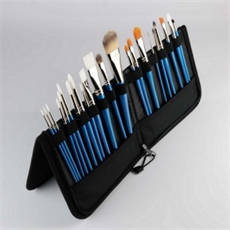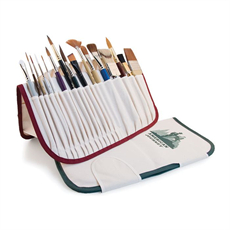Painting the interior of your home DIY-style can be a rewarding and cost-effective project. Using brushes can provide a high level of control and precision. Here are some tips to help you achieve a professional-looking finish when using brushes for your interior painting project:
- Choose the Right Brushes:
- Use high-quality brushes with natural bristles for oil-based paints and synthetic bristles for water-based paints.
- Different brushes have different shapes (e.g., flat, angled, or round) and sizes (e.g., 2-inch, 3-inch). Choose the right brush for the specific task, such as cutting in edges or painting larger areas.
- Prepare the Surface:
- Ensure the walls are clean, dry, and free of dust, dirt, and any loose paint or debris.
- Patch any holes or imperfections with spackling compound and sand the patched areas smooth.
- Use Primer:
- Apply a primer coat before painting, especially if you’re painting over a dark or stained surface. Primer helps the paint adhere better and ensures a uniform finish.
- Cutting In:
- Start by “cutting in” or painting the edges and corners with a brush before using a roller for the larger areas.
- Use a steady hand or painter’s tape to create clean, sharp lines where different colors or surfaces meet.
- Feather the paint along the edges to avoid visible brush marks.
- Dip and Load:
- Dip only about a third of the brush bristles into the paint to avoid overloading it.
- Tap the brush against the side of the paint can to remove excess paint.
- Technique:
- Paint in smooth, even strokes, following the natural direction of the surface (e.g., top to bottom for walls).
- Apply light pressure to prevent brush marks and streaks.
- Overlap each stroke slightly to ensure even coverage.
- Maintain a Wet Edge:
- Try to work quickly and maintain a “wet edge” to prevent visible seams or lap marks. Avoid letting the paint dry between sections.
- Brush Care:
- Clean your brushes thoroughly after each use to prolong their lifespan. For water-based paints, use water; for oil-based paints, use a suitable solvent.
- Store brushes properly by hanging them or placing them flat to maintain their shape.
- Practice:
- If you’re new to painting with brushes, practice your technique on a scrap surface or a piece of cardboard before tackling the walls.
- Multiple Coats:
- Depending on the paint and color, you may need to apply multiple coats. Allow each coat to dry completely before applying the next.
- Patience:
- Take your time, especially when cutting in or working on detail areas. Rushing can lead to mistakes and an uneven finish.
- Safety:
- Ensure proper ventilation when painting. Use a mask if necessary, and protect your hands with gloves.
Remember that a well-prepared surface and good technique are essential for achieving a professional-looking finish when painting with brushes. Don’t hesitate to seek advice or tutorials specific to your project or paint type if you’re uncertain about any aspect of the process.














